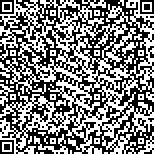施杰洪,王荣丽,王宁华.动态脊柱支撑机器人在脊髓损伤后躯干控制评定中的初步应用研究[J].中华物理医学与康复杂志,2024,46(1):38-43
扫码阅读全文

|
| 动态脊柱支撑机器人在脊髓损伤后躯干控制评定中的初步应用研究 |
|
| |
| DOI:10.3760/cma.j.issn.0254-1424.2024.01.008 |
| 中文关键词: 康复机器人 脊髓损伤 躯干控制 定量评估 |
| 英文关键词: Robots Spinal cord injury Trunk control Seated posture |
| 基金项目:国家重点研发计划(2018YFE0114700,2020YFC2005700) |
|
| 摘要点击次数: 3225 |
| 全文下载次数: 3859 |
| 中文摘要: |
| 目的 探讨动态脊柱支撑机器人在脊髓损伤患者坐位躯干控制能力评估中的初步应用。 方法 于2022年10月至2022年12月招募20例依赖轮椅的脊髓损伤患者。所有患者穿戴动态脊柱支撑机器人完成坐位躯干抗阻测试,嘱患者在躯干左、右、前、后4个方向施加外力的情况下维持直立坐位1 min,评测指标为反映压力中心(COP)摆动情况的8个参数(包括COPx均速、COPy均速、COPx标准差、COPy标准差、包络面积、摆动轨迹长度、平均频率、平均幅值)以及最大自主收缩(MVC)力矩。采用动态脊柱支撑机器人、躯干控制测试(TCT)、Tinetti平衡与步态量表(Tinetti量表)、改良功能性前伸测试(mFRT)和脊髓独立性评定量表第3版(SCIM-III)进行评估。分析动态脊柱支撑机器人抗阻测试结果与TCT量表、Tinetti量表、mFRT和SCIM-III所得结果的相关性。 结果 共20例患者完成左、右向抗阻测试,11例患者完成前、后向抗阻测试。左向抗阻测试中,COPx标准差、COPy标准差、包络面积和MVC与TCT、Tinetti、mFRT、SCIM-III呈低到高度相关(|r|=0.474~0.739, P<0.05);右向抗阻测试中,COPx均速、MVC与TCT、Tinetti、mFRT、SCIM-III呈低到高度相关(|r|=0.461~0.740, P<0.05);前向抗阻测试中,MVC与TCT、mFRT、SCIM-III呈中度相关(|r|=0.632~0.672, P<0.05);后向抗阻测试中,MVC与TCT、mFRT呈中度相关(|r|=0.627~0.672, P<0.05)。 结论 采用动态脊柱支撑机器人可以有效评测脊髓损伤患者的反应性姿势控制能力和功能独立性。 |
| 英文摘要: |
| Objective To explore the utility of a robotic trunk support brace (a RoboBDsys) in evaluating seated trunk control after a spinal cord injury (SCI). Methods Twenty wheelchair-dependent SCI patients were tested for trunk resistance while seated and wearing the RoboBDsys. In the test they were required to maintain an upright seated position for 1 minute while external forces were applied from the left, right, anterior and posterior directions. The system generated eight observations of swings of the center of pressure (COP), their mean velocity and their standard deviations. Sway area, sway path (SP), mean sway frequency (MF) and mean sway amplitude (MA) were also recorded along with the maximum voluntary contraction torque (MVC). The trunk control test (TCT), the Tinetti Balance Scale (Tinetti), the modified Functional Reach Test (mFRT) and Spinal Cord Independence Measure III (SCIM-III) were also administerd and their results were correlated with the RoboBDsys resistance test results. Results All twenty of the patients completed the resistance test in the left and right directions, but only 11 did it in the anterior and posterior directions. In the left and right-direction resistance tests the average center of pressure deviation, sway area and MVC showed some significant correlation with the TCT, Tinetti, mFRT and SCIM-III results (|r| ranging from 0.46 to 0.74). The average MVC in the anterior-direction correlated moderately with the TCT, mFRT and SCIM-III results (|r|=0.63 to 0.67), while that in the posterior-direction had moderate correlation with the TCT and mFRT results only (|r|=0.63 to 0.67). Conclusion The Robotic Brace for Dynamic Trunk Support system can be effective in assessing reactive postural control and functional independence after a spinal cord injury. |
|
查看全文
查看/发表评论 下载PDF阅读器 |
| 关闭 |
|
|
|